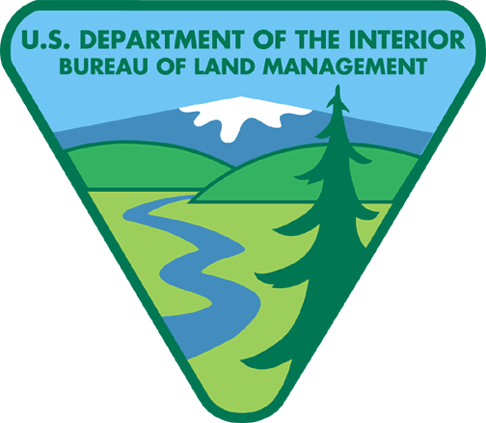The Bureau of Land Management announced today that it has selected for environmental analysis a public-private land wild horse ecosanctuary proposal submitted by Saving America’s Mustangs (SAM), a non-profit organization formed by Madeleine Pickens. The BLM will conduct an environmental analysis of the proposal under the provisions of the National Environmental Policy Act (NEPA) of 1969 to assess the environmental, economic, social, and other effects of the proposed ecosanctuary. The BLM expects its NEPA analysis – which will include extensive public input – to be completed in approximately two years, after which the agency will make a decision about whether to enter into a formal partnership with SAM.
SAM’s proposed non-reproductive, 900-head ecosanctuary would help the BLM care for the horses while ensuring healthy rangeland conditions. Under the proposal, SAM would improve and maintain fencing and water wells and oversee management of the ecosanctuary horses, which would remain under Federal ownership. SAM would also provide Western history- and wild horse-related education and promote ecotourism. The BLM-managed public lands that would be part of the proposed ecosanctuary – 530,000 acres known as the Spruce grazing allotment – would continue to be publicly accessible for a variety of outdoor activities, such as big game hunting. The proposed ecosanctuary also includes SAM’s private land, approximately 14,000 acres located in northeastern Nevada (south of Wells), that serves as “base property” for the Spruce grazing allotment, which overlays portions of three wild horse Herd Management Areas. (Base property is private land to which preference for obtaining a BLM grazing permit is attached; the base property is required for a permit, which authorizes grazing on public land.)
SAM holds the allotment’s livestock grazing privileges, which it would relinquish to the BLM for intended use by wild horses. SAM was the only party that submitted a potentially viable proposal to the BLM in response to the agency’s Request for Applications posted on www.grants.gov on March 25, 2011. Other proposals were not selected for environmental review because they did not meet the BLM’s minimum requirements, including ownership or control of the necessary private land and a proven ability to provide humane care for at least 200 wild horses. If a partnership agreement with SAM were to be finalized, the BLM would sponsor the ecosanctuary with funding sufficient to cover the cost of managing the horses – an expense that is anticipated to be less than the BLM’s existing cost for holding horses in long-term pastures in the Midwest. The potential partnership agreement for the ecosanctuary envisions a fundraising role by SAM to cover educational and tourist-related costs.
“The selection of SAM’s proposal for environmental analysis furthers our overall effort to improve management and control costs of the Wild Horse and Burro Program,” said BLM Director Bob Abbey, who noted that the BLM is preparing to publish a new wild horse and burro management strategy in the coming weeks. The strategy, among other things, calls for the establishment of ecosanctuary partnerships.
The decision to begin NEPA analysis of SAM’s proposal follows the agency’s February 24 announcement of its selection of a Wyoming-based, private land-only sanctuary proposal for environmental review. The BLM plans to announce another Request for Applications for more private land-only ecosanctuaries.
The BLM manages more than 245 million acres of public land, the most of any Federal agency. This land, known as the National System of Public Lands, is primarily located in 12 Western states, including Alaska. The BLM also administers 700 million acres of sub-surface mineral estate throughout the nation. In Fiscal Year (FY) 2011, recreational and other activities on BLM-managed land contributed more than $130 billion to the U.S. economy and supported more than 600,000 American jobs. The Bureau is also one of a handful of agencies that collects more revenue than it spends. In FY 2012, nearly $5.7 billion will be generated on lands managed by the BLM, which operates on a $1.1 billion budget. The BLM’s multiple-use mission is to sustain the health, diversity, and productivity of the public lands for the use and enjoyment of present and future generations. The Bureau accomplishes this by managing such activities as outdoor recreation, livestock grazing, mineral development, and energy production, and by conserving natural, historical, cultural, and other resources on public lands.


